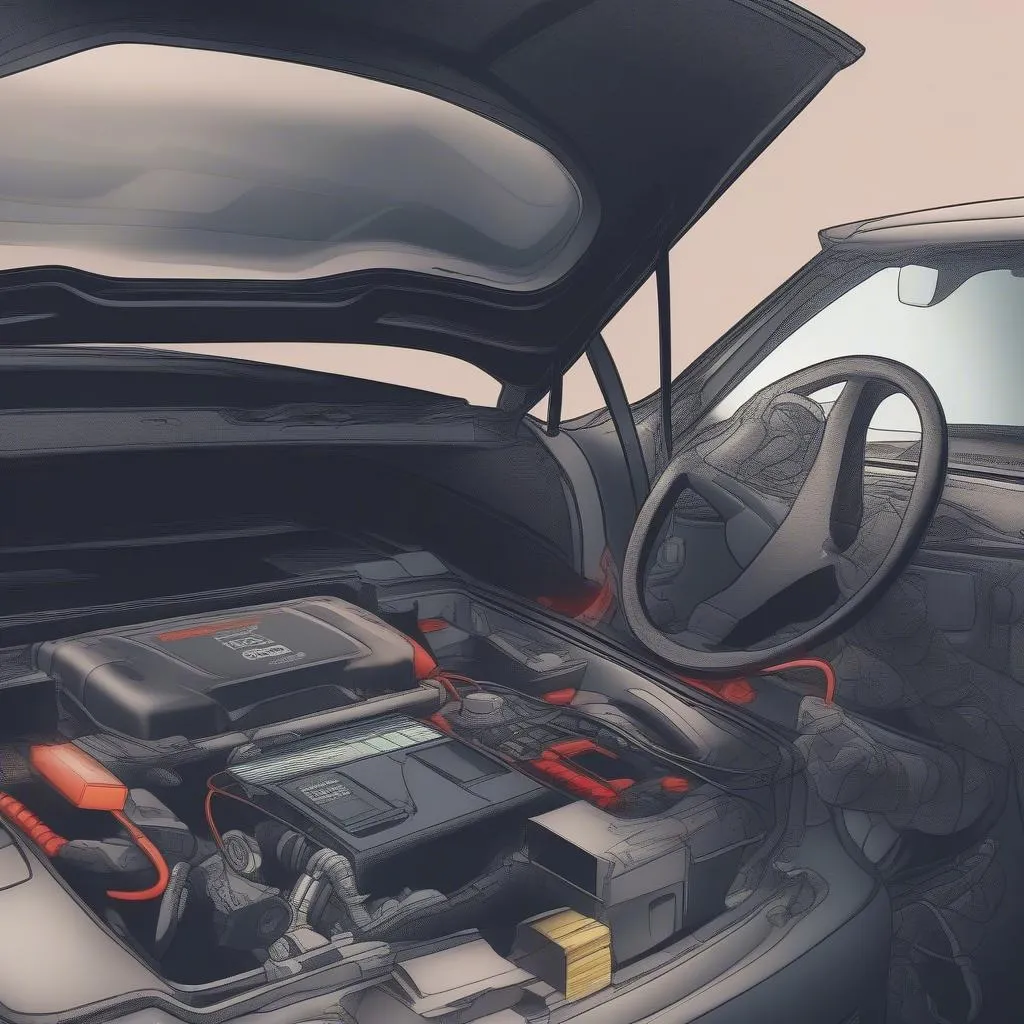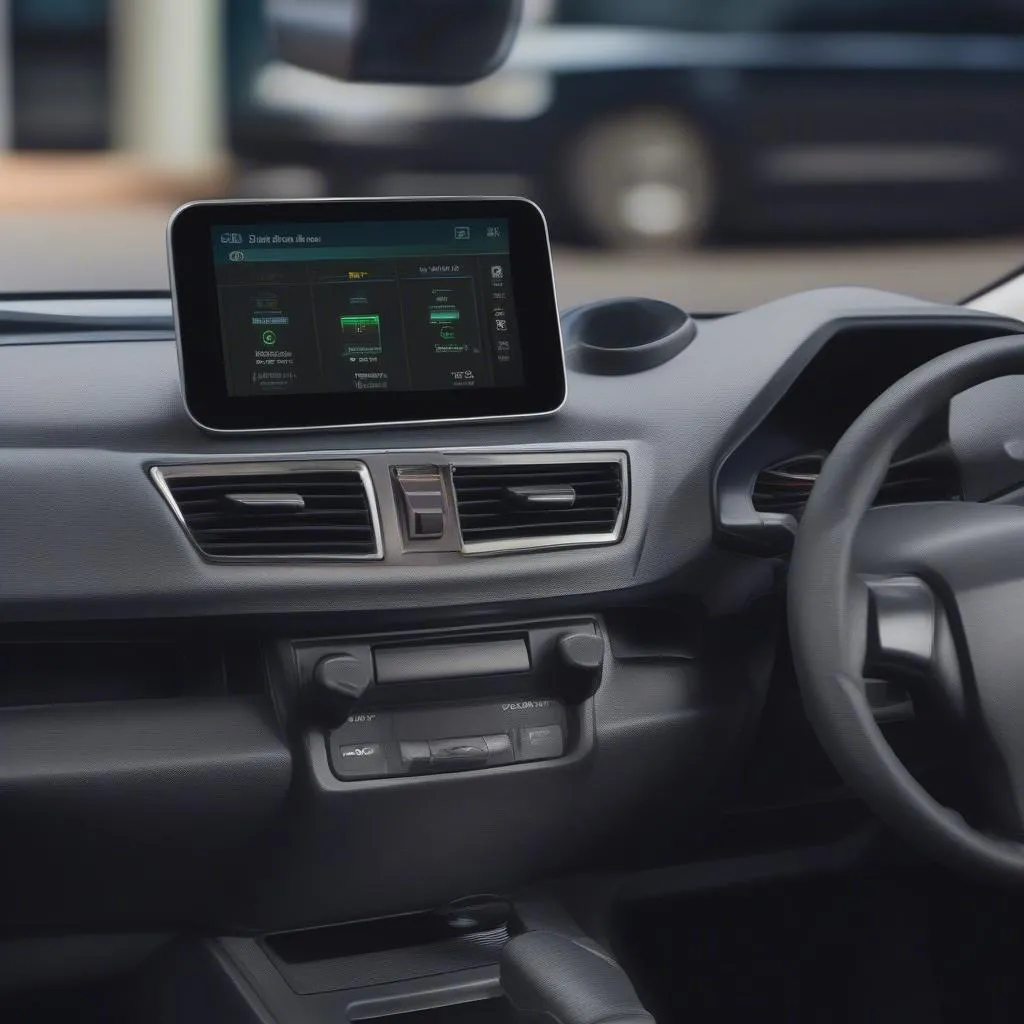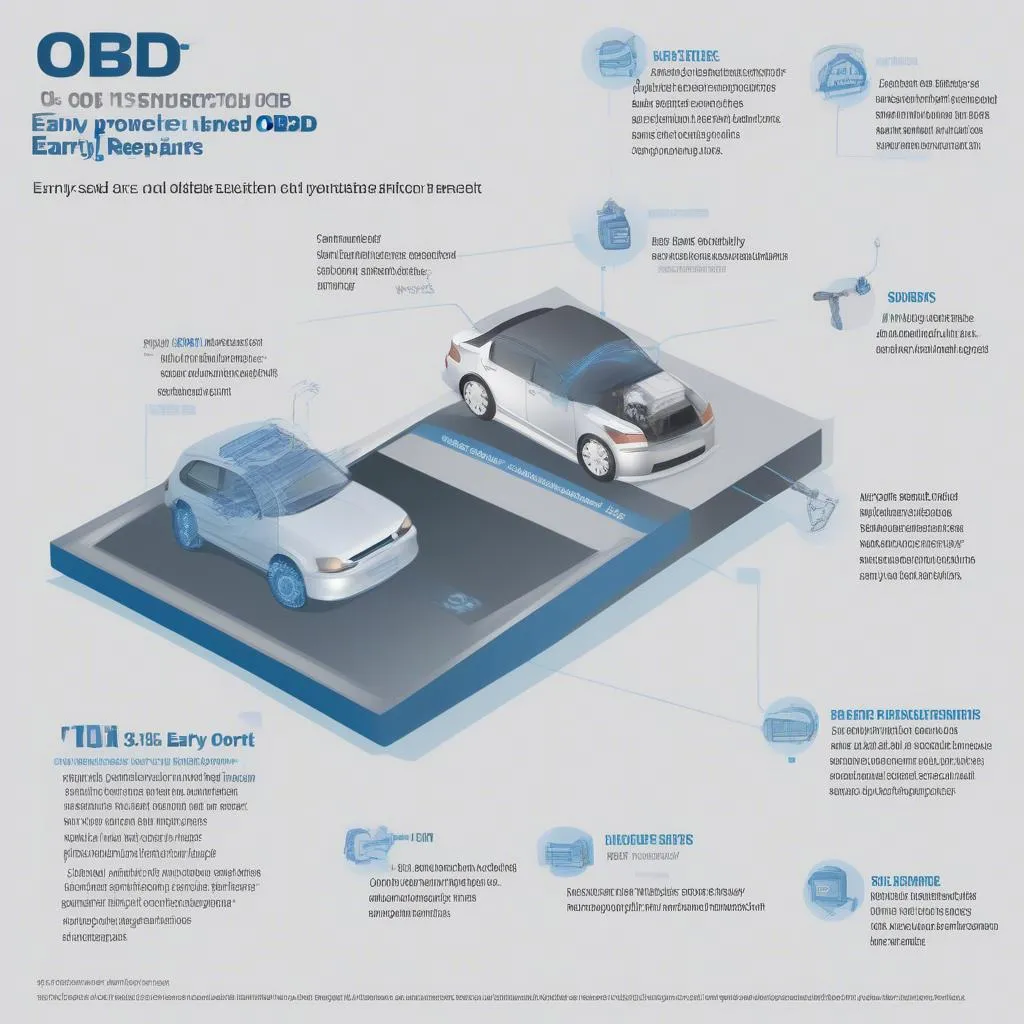Ever wondered what that little port under your dashboard is for? It’s not just a random hole, it’s the gateway to understanding your car’s health – the OBD II port. Imagine you’re driving down a busy highway, suddenly your engine starts sputtering. You pull over, heart pounding, not knowing what to do. But if you had access to the OBD II port, you could quickly diagnose the problem and even get directions to the nearest mechanic.
Understanding OBD II Port: A Vital Tool for Car Owners
The OBD II port, short for On-Board Diagnostics II, is a standardized connector found in most gasoline-powered cars sold in the United States since 1996. It’s a communication hub between your car’s computer and the outside world. Think of it as a translator, allowing you to understand what your car’s brain is saying.
What Does the OBD II Port Do?
The OBD II port serves as a communication channel for car manufacturers to monitor and diagnose the car’s health. It provides information on a wide range of sensors, including:
- Engine performance: Fuel mixture, engine temperature, RPM, and emissions levels.
- Transmission: Gear selection, transmission fluid temperature, and transmission pressure.
- Vehicle speed: Speed sensor and wheel speed sensors.
- Airbag system: Deployment status and fault codes.
- Anti-lock brakes (ABS): Wheel speed sensor readings and fault codes.
- Fuel system: Fuel pressure, fuel level, and fuel consumption.
Why is the OBD II Port Important?
The OBD II port plays a crucial role in understanding and maintaining your car’s health. Here’s why:
- Early Problem Detection: It allows you to catch problems before they escalate, saving you money and avoiding potential hazards.
- Enhanced Safety: It can detect issues like airbag problems or faulty ABS, ensuring your safety on the road.
- Environmentally Friendly: It helps monitor emissions levels, ensuring your car is running efficiently and reducing pollution.
- Cost-Effective Repairs: By understanding fault codes, you can pinpoint the problem accurately, minimizing unnecessary repairs.
Finding Your OBD II Port
The OBD II port is usually located under the dashboard, near the steering column. It’s often marked with a small, blue “OBD II” label. If you can’t find it, you can check your car’s owner’s manual for its location.
What Can You Do with the OBD II Port?
There are a wide range of tools and apps that connect to your car’s OBD II port:
- OBD II Scanners: These devices read and interpret fault codes from your car’s computer. Many come with user-friendly interfaces and provide explanations for the codes.
- Smartphone Apps: Many apps allow you to connect to your car’s OBD II port via Bluetooth or Wi-Fi and monitor real-time data, including engine performance, fuel economy, and other parameters.
- Performance Tuning Tools: Some advanced OBD II devices allow you to adjust your car’s performance settings, such as fuel economy, horsepower, and acceleration.
 OBD II port scanner
OBD II port scanner
Frequently Asked Questions about OBD II Ports
Here are some common questions about OBD II ports:
Does My Car Have an OBD II Port?
Most gasoline-powered cars sold in the United States after 1996 have an OBD II port. However, older vehicles or some imported cars might not have it. It’s always a good idea to check your car’s owner’s manual.
Can I Use Any OBD II Scanner?
While all OBD II scanners use the same standard connector, some scanners are more advanced than others. Some scanners can only read fault codes, while others can also monitor real-time data, clear codes, and even perform basic diagnostics.
How Do I Use an OBD II Scanner?
Using an OBD II scanner is relatively straightforward. Most scanners come with instructions, and many have user-friendly interfaces. You simply plug the scanner into your car’s OBD II port, turn the ignition key to the “on” position, and follow the instructions on the scanner.
Can I Fix My Car Myself Using an OBD II Scanner?
While an OBD II scanner can help you identify the problem, it’s not a substitute for a qualified mechanic. If you’re not comfortable working on your car, it’s best to take it to a professional.
 OBD II port location
OBD II port location
Conclusion
The OBD II port is a valuable tool for understanding and maintaining your car’s health. By utilizing this technology, you can catch problems early, improve safety, reduce emissions, and save money on repairs. Remember to consult your car’s owner’s manual for the location of the OBD II port and to consult a qualified mechanic for any major repairs.
Ready to learn more about automotive diagnostics and how to use the OBD II port effectively? Contact us at Whatsapp: +84767531508 for expert advice and support. We are always here to help you keep your car running smoothly.
Let us know your thoughts and experiences with the OBD II port in the comments below!
Want to learn more about the OBD II port? Check out our other articles on [link to related article].
 OBD II port benefits
OBD II port benefits